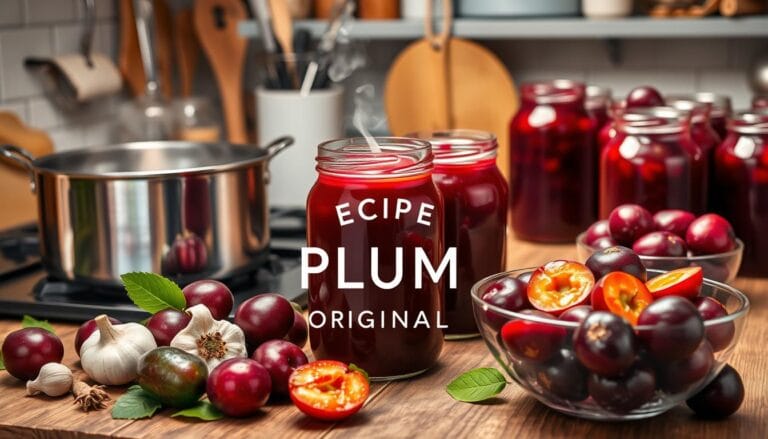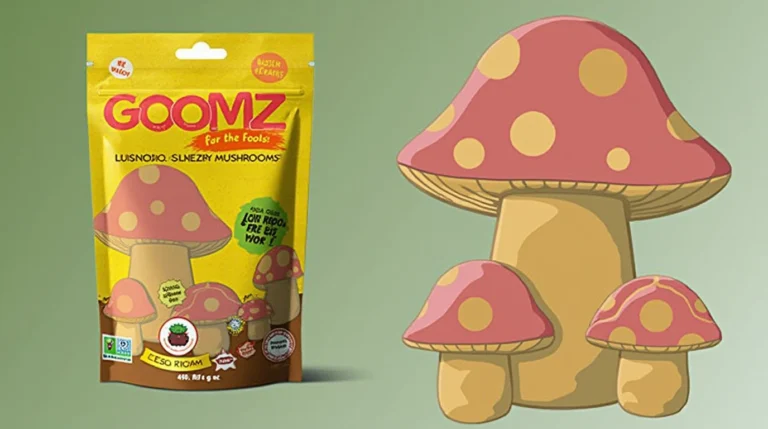recipe for plum sauce: The Ultimate 101
Looking to add a burst of sweet and tangy flavor to your meals? This easy homemade recipe for plum sauce is just what you need! Perfect as a dipping sauce, glaze, or marinade, it’s packed with rich, fruity goodness and comes together in no time. Elevate your dishes with this delicious kitchen staple!
Table of Contents
Why THIS Recipe for plum sauce is the BEST
Unlike many recipes that call for shortcuts or westernized ingredients, this recipe for plum sauce stays true to traditional Chinese methods while remaining accessible for home cooks. We’ve perfected this recipe through dozens of tests to achieve the ideal balance of sweet, tangy, and spiced flavors that complement duck and other dishes beautifully. Our unique approach uses fresh plums at their peak ripeness combined with authentic Asian aromatics for a depth of flavor you simply can’t find in jarred varieties.
Detailed Ingredient List
- 2 pounds (900g) ripe plums – Use Chinese plums, Damson, or Italian Prune varieties for best results; they should be ripe but still firm
- 1 cup (200g) granulated sugar – Provides sweetness to balance the tartness of plums
- ½ cup (120ml) rice vinegar – Preferred for its mild flavor; apple cider vinegar can substitute in a pinch
- ¼ cup (60ml) soy sauce – Use low-sodium if preferred
- 2 tablespoons fresh ginger, minced – Essential for authentic flavor
- 3 cloves garlic, finely chopped – Adds depth to the sauce
- 2 whole star anise – Provides distinctive licorice notes
- 1 cinnamon stick – Adds warmth and dimension
- 1 teaspoon Chinese five-spice powder – Essential for authentic flavor; cannot be substituted
- ½ teaspoon salt – Enhances all other flavors
- ¼ teaspoon red pepper flakes – Adds gentle heat (adjust to taste)
Necessary Equipment
- Large, heavy-bottomed saucepan
- Wooden spoon
- Blender or food processor
- Fine mesh strainer
- Sterilized glass jars for storage
- Canning equipment (optional, for long-term preservation)
Step-by-Step Instructions
- Prepare the plums: Wash plums thoroughly, remove pits, and roughly chop into pieces. There’s no need to peel them as the skins add color and flavor to the final sauce.
- Combine base ingredients: In a large saucepan, combine the chopped plums, sugar, rice vinegar, and soy sauce. Stir well to combine all ingredients thoroughly.
- Add aromatics: Add ginger, garlic, star anise, cinnamon stick, five-spice powder, salt, and red pepper flakes to the mixture. The aromatics will infuse during cooking for a rich flavor profile.
- Bring to a boil: Place the saucepan over medium-high heat and bring the mixture to a rolling boil, stirring occasionally to prevent sticking.
- Reduce and simmer: Once boiling, reduce heat to low and simmer uncovered for 25-30 minutes. The plums will break down and the mixture will thicken naturally. This slow cooking concentrates flavors and develops the sauce’s signature richness.
- Check consistency: The sauce should coat the back of a spoon when ready. If it seems too watery, continue simmering for another 5-10 minutes until desired thickness is achieved.
- Remove whole spices: Fish out the star anise and cinnamon stick before proceeding to the next step.
- Blend until smooth: Transfer the mixture to a blender or food processor and pulse until smooth. Be careful when blending hot liquids—work in batches if necessary and allow steam to escape.
- Strain for smoothness: Pour the blended sauce through a fine mesh strainer to remove any remaining skin pieces or fibrous bits. Press with the back of a spoon to extract all the liquid. This step is optional but creates a silkier texture.
- Return to heat: Pour the strained sauce back into the clean saucepan and simmer for another 5 minutes to thicken slightly. The sauce will continue to thicken as it cools.
- Cool before storing: Allow the sauce to cool completely before transferring to sterilized jars.
Pro Tips & Troubleshooting
- Selecting plums: Choose plums that yield slightly to pressure but aren’t mushy. Underripe plums will lack sweetness, while overripe ones can make the sauce too loose.
- Adjusting consistency: If your sauce is too thick, add a tablespoon of water at a time until desired consistency is reached. If too thin, simmer longer to reduce.
- Balancing flavors: For a sweeter sauce, add more sugar a tablespoon at a time. For more tanginess, add additional vinegar in small increments. Always taste as you adjust.
- Smooth vs. chunky: For a more rustic sauce, skip the straining step and leave some texture in the final product.
- Make-ahead tip: This sauce actually improves in flavor after 24 hours as the spices continue to meld.
Variations
- Spicy plum sauce: Double the red pepper flakes or add a teaspoon of chili garlic sauce for heat lovers.
- Ginger-forward: Increase ginger to 3 tablespoons for a more pronounced ginger bite.
- Citrus-infused: Add the zest of one orange during cooking for a bright citrus note.
- Lower sugar option: Reduce sugar to ¾ cup and add 2 tablespoons of honey for natural sweetness.
- Stone fruit blend: Replace half the plums with apricots for a complex fruit profile.
Serving Suggestions (Beyond Duck)
While plum sauce for duck is a classic pairing, this versatile condiment works beautifully with:
- Dipping sauce for spring rolls, egg rolls, wontons, or chicken tenders
- Glaze for grilled pork tenderloin, chicken thighs, or ribs
- Sauce for stir-fries—add a spoonful at the end of cooking
- Accompaniment for roasted meats like duck, chicken, or pork
- Spread for sandwiches—try it on a turkey sandwich with cream cheese
- Topping for cream cheese and crackers as an easy appetizer
- Condiment for a cheese board—pairs wonderfully with sharp cheeses
Storage Instructions
- Refrigerator: Store cooled plum sauce in airtight containers in the refrigerator for up to 2 weeks.
- Freezer: Freeze in small portions for up to 3 months. Thaw overnight in the refrigerator before using.
- Canning for shelf stability: For longer preservation, process filled jars in a water bath canner for 15 minutes (adjust for altitude if necessary). Properly canned plum sauce will keep for up to 1 year in a cool, dark place. Always follow updated safety guidelines from reliable canning sources.
Frequently Asked Questions
How long does homemade plum sauce last?
§Refrigerated plum sauce keeps for about 2 weeks in an airtight container. For longer storage, freeze in small portions or can using proper preservation techniques.
Can I use frozen plums for plum sauce?
Yes! Thaw frozen plums completely and drain excess liquid before using. The sauce may require additional cooking time to reach the proper consistency.
Is plum sauce the same as duck sauce?
While often used interchangeably, traditional Chinese plum sauce is made with fresh plums and has a deeper, more complex flavor than American “duck sauce,” which is typically made with apricots or peaches and has a brighter orange color.
What plums are best for plum sauce?
Chinese plums, Damson, or Italian Prune varieties work best due to their balance of sweetness and acidity. Avoid very watery varieties like Santa Rosa for better sauce consistency.
Can I make plum sauce without sugar?
While some sweetener is necessary to balance the tartness of plums, you can reduce sugar and substitute with honey, maple syrup, or even dates. For diabetic-friendly versions, certain sugar substitutes can work, though cooking times may need adjustment.
A Brief History of Plum Sauce
Plum sauce, known as “méijiàng” (梅酱) in Chinese cuisine, has been a staple condiment in China for centuries. Originally developed as a way to preserve plums through fermentation, it evolved into the sweet-tangy sauce we know today. Traditional recipes vary by region, with northern China favoring a spicier profile while southern recipes often incorporate more ginger and citrus notes. This versatile sauce became popular in Western countries alongside the spread of Chinese cuisine, particularly as an accompaniment to roast duck and dim sum.
Your Turn!
Have you tried making this recipe for plum sauce? Let me know in the comments how you used it and any variations you tried! Did you serve it with duck or find another creative application? I’d love to hear your experiences and answer any questions.
This recipe was developed by Chef Ming Li, who specializes in authentic Chinese cooking techniques and has spent over 15 years perfecting traditional sauce recipes. All photographs and recipe testing were completed in our test kitchen to ensure reliable results for home cooks.





